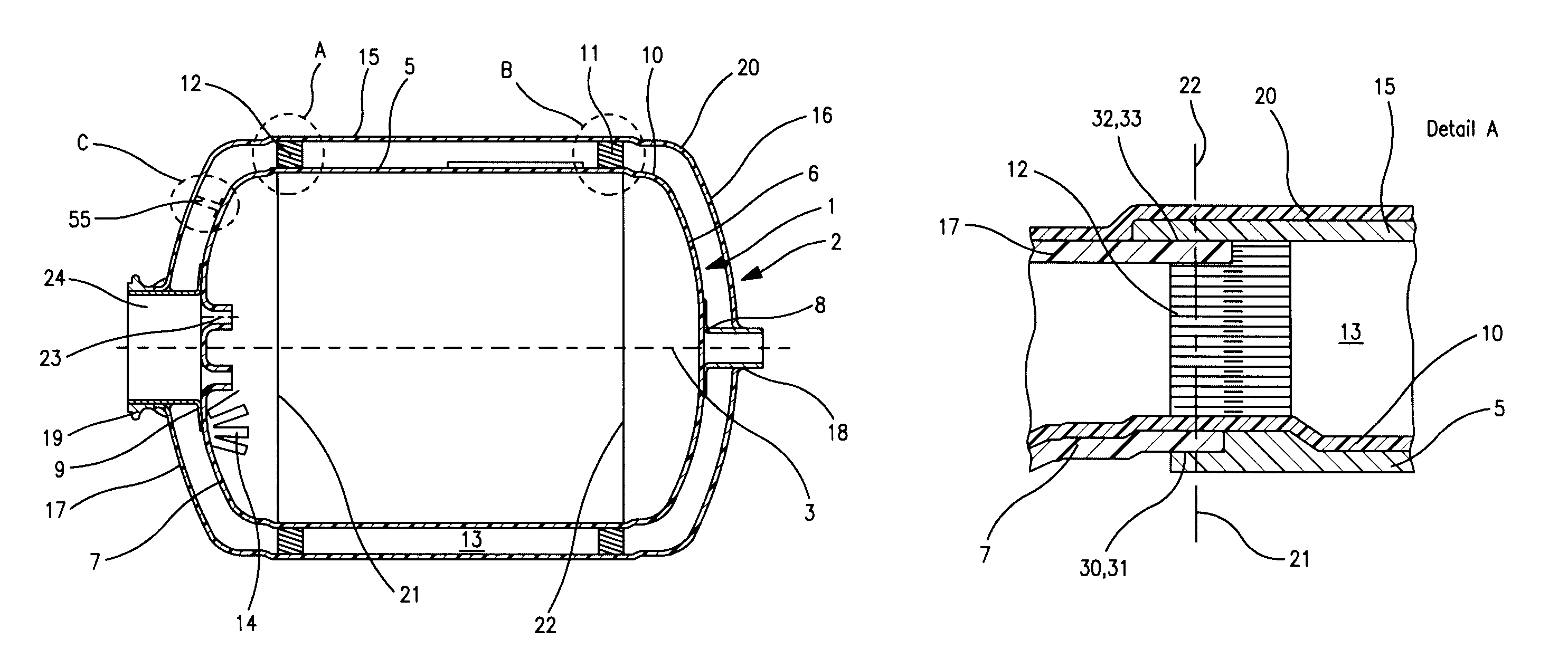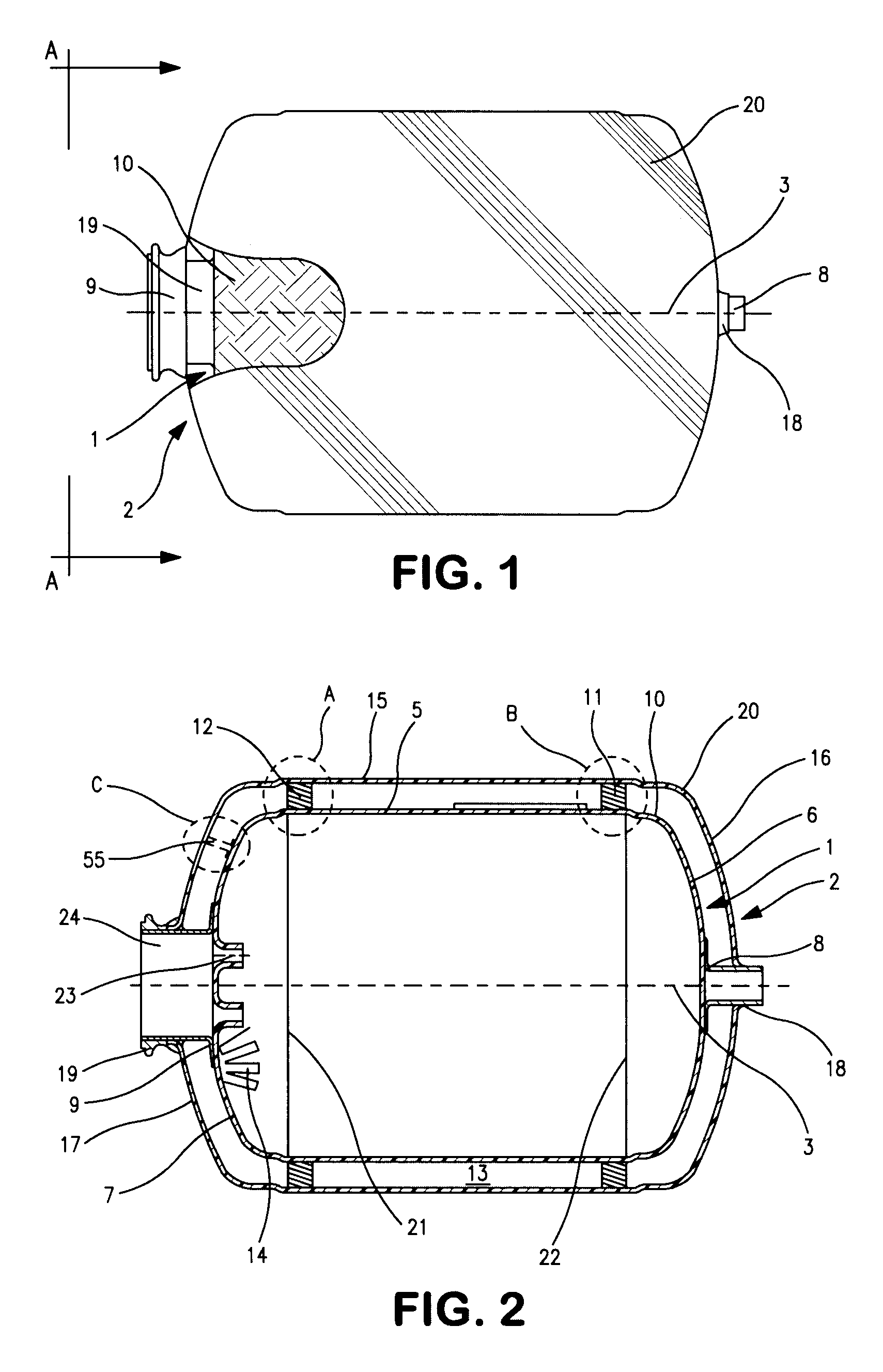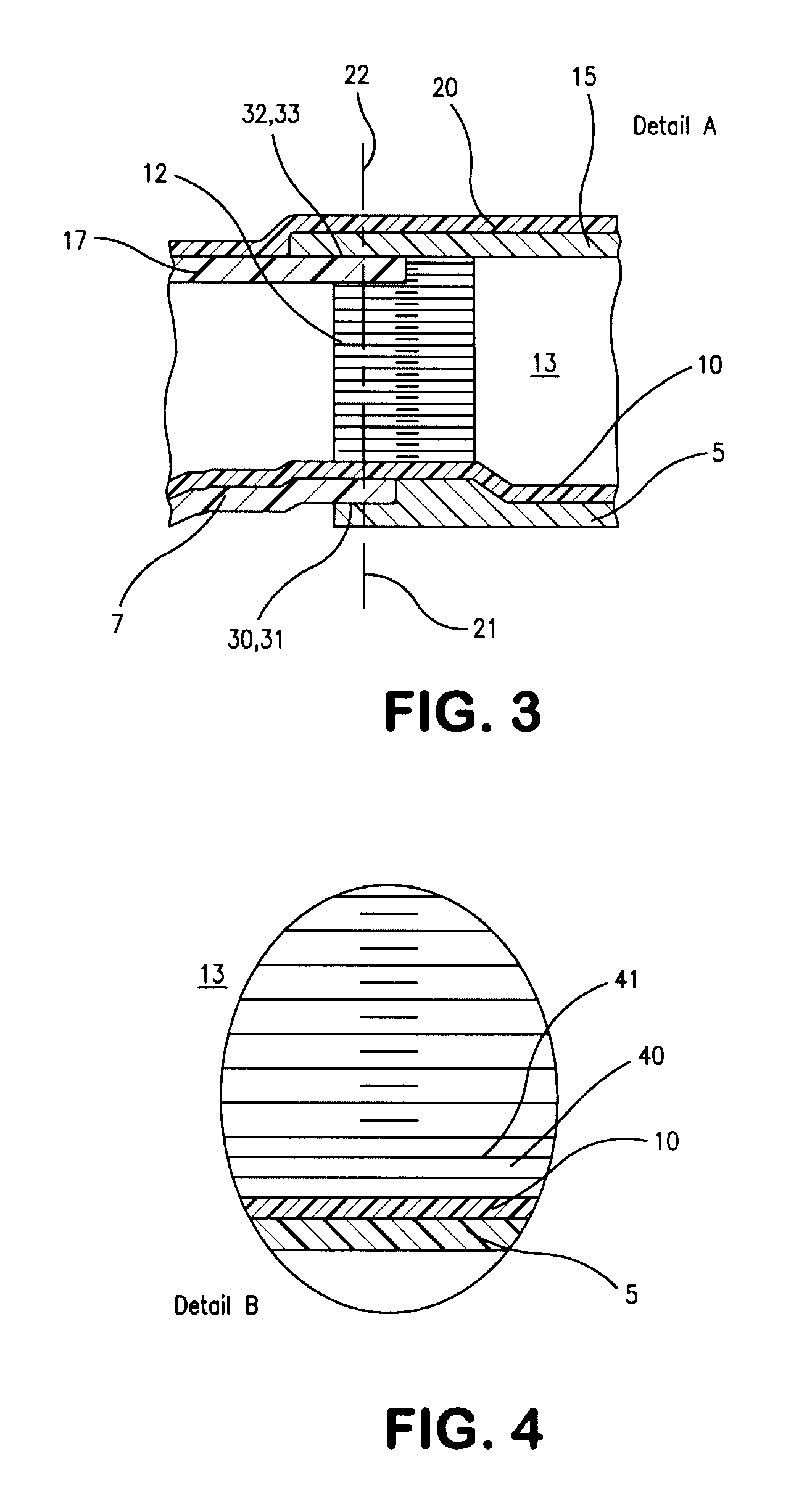[0007]According to the invention, this is achieved in that inner container and outer container are in each case composed of prepared, fiber-reinforced elements (called “prepregs” in the art) which are in each case wrapped up with a filament and are thereby connected to one another, and in that supports which are also composed of a fiber-reinforced plastic are provided on the inner container for the relative positioning of the inner container with respect to the outer container. In other words: both the outer container and the inner container are each individually composed of fiber-reinforced elements which are each individually held together in such a manner by being wrapped up that they withstand the forces which occur. The supports which are integrated with the inner container in the one or other manner solve the problem of the containers being sufficiently precisely aligned and moveable relative to each other while having different thermal expansions. Owing to the fitting of the supports on the inner container, they can be manufactured precisely in a simple manner and can easily be fitted together. The elements can be assembled in various ways or in a plurality of processing steps to form the particular container.
[0008]In a development of the concept of the invention, inner container and outer container in each case comprise parts which are each individually assembled from prepared, fiber-reinforced elements (for example, prepregs or tubes), which parts adjoin one another along specific joining lines and are consequently wrapped up together with a filament. The filament is generally and advantageously the same as the fibers of the elements themselves. The stepwise building up firstly of the individual parts from prepregs and then of the individual container (inner and / or outer container) from the parts results in them being held together particularly well at very low manufacturing costs.
[0009]For the wrapping up with the filament, it is advantageous to equip the parts of the inner container and of the outer container at the joining lines with mating surfaces suitable for an adhesive bond. The mating surfaces ensure that the parts are fitted together with dimensional accuracy. No particular demands then have to be imposed on the adhesive bond, since it is used predominantly for holding the parts together up until and while they are being wrapped up.
[0013]Although containers built up according to the invention may be of any desired shape as long as their contour does not have any significant concave surface parts, in one preferred embodiment of the invention the vessel is axially symmetrical, comprising a cylindrical, tubular central part and end domes on both sides. Central part and end domes are assembled in each case from prepared, fiber-reinforced elements and are connected to one another at joining lines situated in planes perpendicular to the axis. The central part is then a pre-manufactured tube and the domes are assembled from prepregs. This shape gives rise to particularly favorable stress ratios, also with regard to the vacuum prevailing between inner and outer containers, and is particularly readily suitable for simple and rapid fitting together.
[0014]A further improvement of the force transmission is achieved if, in the case of the inner container, the cylindrical mating surfaces suitable for an adhesive bond are arranged in such a manner that the cylindrical central part overlaps the domes on the inside and, in the case of the outer container, the cylindrical central part overlaps the domes on the outside. This causes the adhesive joints to be subjected to a compressive stress by the vacuum prevailing between inner and outer containers, this increasing their durability, and the subsequent wrapping up under prestress increasing this effect even further.
[0016]As a result, different thermal expansions can be absorbed without asymmetrical displacement between inner and outer containers. For centering and rotating the workpiece during the wrapping-up operation, the domes have a centering slug in the intercepting point with their axis of symmetry. Said centering slug has for this purpose a central, longitudinally directed aperture through which the contents are also equally fed in and removed and other apparatuses can be introduced into the container. In particular the centering slug of the inner container may also be used for centering the latter with respect to the outer container. The line connections into the interior are thus produced at the point at which minimal relative displacements of the two container walls with respect to each other occur and at the point where it is easiest, because of openings which are already present. As a result, the large surfaces of the container walls also remain free for unimpeded wrapping up, which considerably simplifies the production thereof.
 Login to View More
Login to View More 


